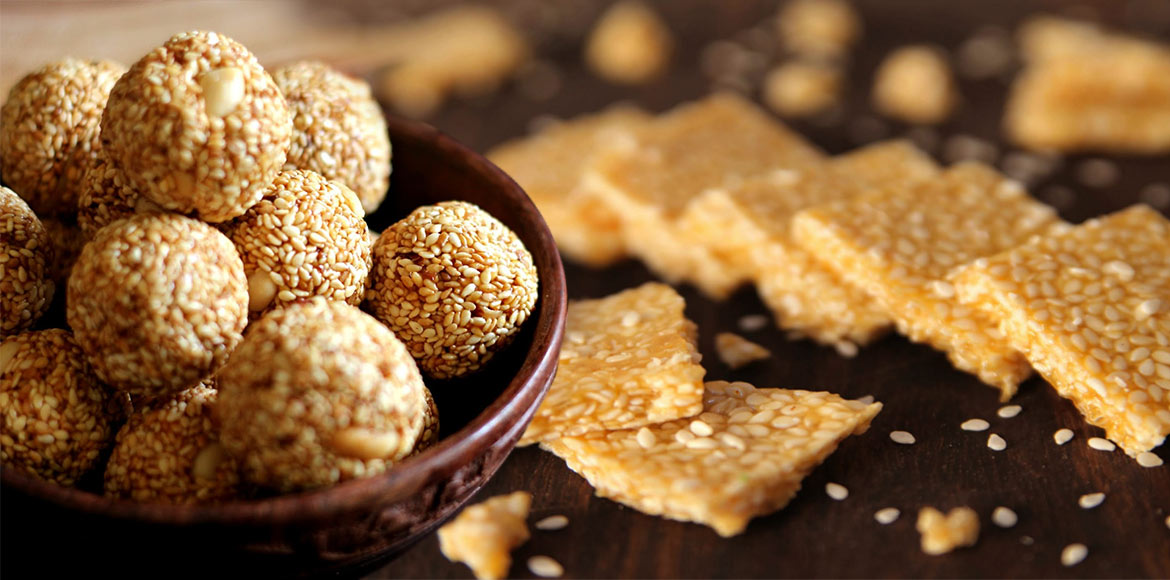Here’s a look at what’s cooking in different homes this Makar Sankranti.

I woke up today to a WhatsApp invitation for this Sunday by a fellow resident. Before I say any further I would like you to know that I stay in a posh high-rise society in Indirapuram, and we interact mostly through WhatsApp. The message read: All Saya Zenith residents are requested to attend the khichdi feast outside the gates; all passers-by will also be served the same. I have heard of aloo puri distribution, dal chawal, kadi chawal and halva puri, so why khichdi?
I decided to do a bit of research, and came to know it's Makar Sankranti this Sunday, and people celebrate the day by serving khichdi. This preparation is served to all — the poor, those visiting — anybody, really.
So this Sunday, we will all celebrate the same spirit, but under different names across India. Lohri in North India, Makar Sankranti in the west and some parts of North India, and Pongal in South India. Indian festivities are incomplete without their own delicacies and food specialities. Every state has its own special dish, and that’s what got me thinking.
Here’s a look at what’s cooking in different homes this Makar Sankranti.
Khichdi
Khichdi the most common and famous Makar Sankranti preparation. No celebration is complete without the presence of aromatic khichdi. Khichdi seems like a simple dish, but everything has to be done in correct proportions for the mish-mash to come out beautifully.
The dish is loved for its simplicity — it’s a mixture of lentils (dal) and rice (chawal) cooked together in a mixture of spices and ghee. Garnishing can happen with whatever takes your fancy — dry red chillies, peanuts, nuts, potatoes, peas and cauliflower. Some like to have it with fried or roasted papad.
Til chikkis or til laddoo
Til [sesame seeds] is a staple of this festival. Makar Sankranti celebration is incomplete without sweets using til, coconut and gud [jaggery].
Dahi chiwda
A speciality from east India, this delicacy is a simple mixture of flattened rice or chiwda and dahi [curd], with a generous dollop of gud to add both sweetness and flavour. You can add a cup of milk to make a complete meal of it.
Puran poli
Puran Poli, a popular and flavoursome Maharashtrian dish, is simply roti [Indian flatbread] stuffed with til, roasted gram flour mixed with dashed jaggery. It is served with warm ghee poured over it lavishly.

Undhiyu
For all Gujarati households, celebratory lunch includes undhiyu and jalebis, along with other sweets — til ki chikki, khichdi and goondar paak. Undhiyu is basically a mixed vegetable dish that is a regional speciality of Surat. The mixture is slow cooked, with very little water, for a good amount of time. Usually vegetable oil is used for cooking it.
Payesh and pithe puli
Makar Sankranti, known as Poush Sankranti in Bengali households, is associated with various sweet delicacies such as pathishapta, puli pithe and payesh. Puli pithe is basically a type of sweet dumpling stuffed with sweetened coconut and gud filling, boiled in whole milk.
Sakkarai Pongal
Sakkarai Pongal is a traditional South Indian delicacy cooked with rice, gud, moong dal and cashew in ghee. Makar Sankranti is celebrated as Pongal in Tamil Nadu. It signifies abundance in the south.
Well, I will be at my khichdi feast this Sunday, but where do you plan to be? Will it be puli pithe or puran poli for you? Quick, bag an invitation.